Environment
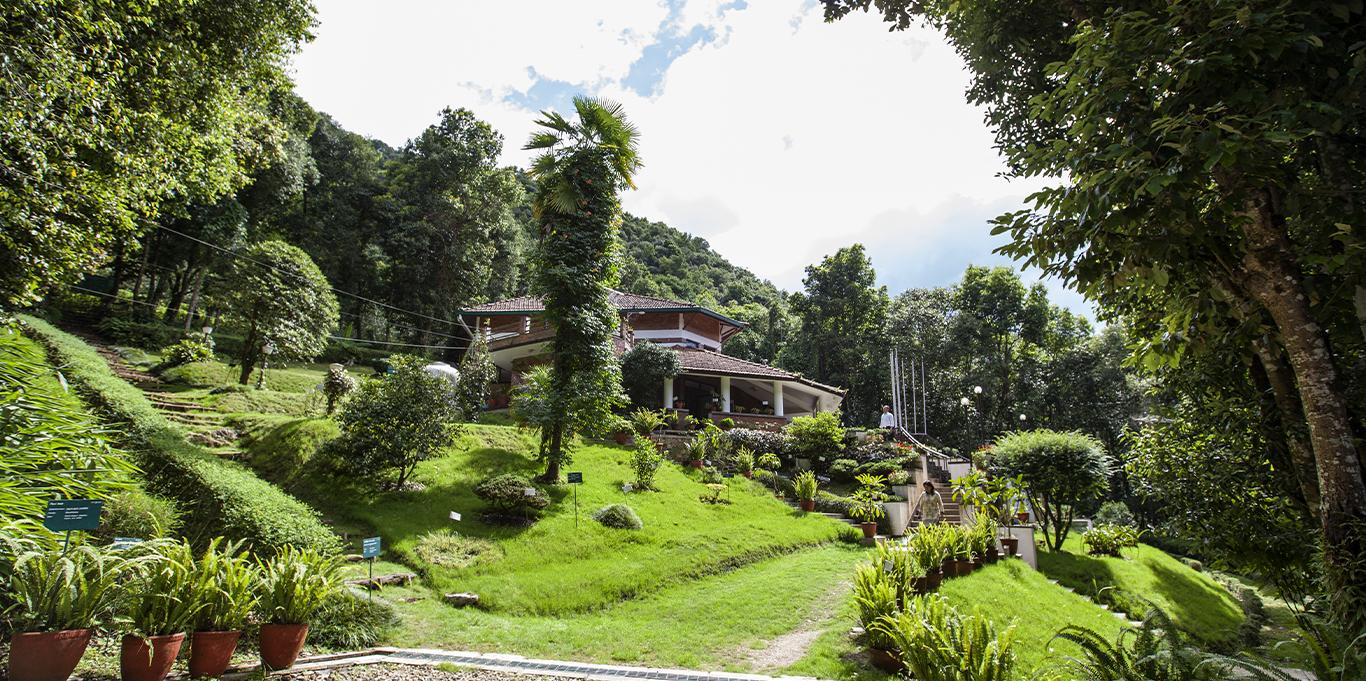
If you are a member of a mountain community keen on knowing about the possibilities the highlands can offer or seeking solutions to problems such as water and energy crises, then you must visit ICIMOD’s Knowledge Park at Godavari, south of Kathmandu.
Headquartered in Lalitpur, Nepal, International Centre for Integrated Mountain Development (ICIMOD) is an intergovernmental knowledge and learning centre that develops and shares research, information, and innovations to empower people in the eight regional member countries of the Hindu Kush Himalaya (HKH).
Nestled amidst the greenery of the Godavari forest and the Phulchoki hill, the Knowledge Park showcases a variety of projects and schemes that you can introduce to your community and make everyone’s life much better.
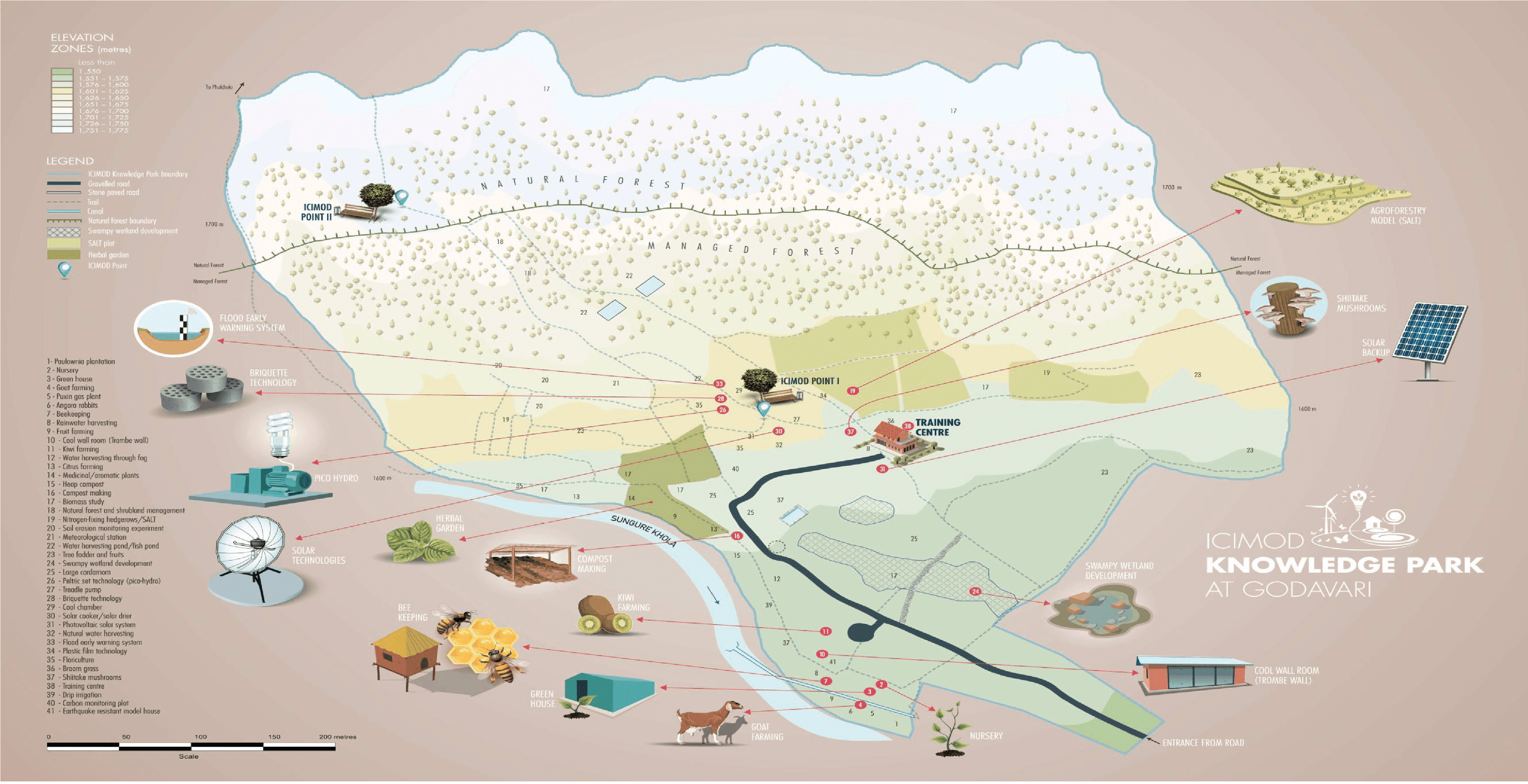
They include everything from sustainable farming to goat-rearing; solar power harnessing to generating electricity by installing a pico hydro scheme; and from controlling soil erosion or preventing landslides to building quake-resistant homes.
In all, the park, spread across 30 hectares of land, demonstrates 90 different technologies that you can adopt and replicate in your community.
The mecca for knowledge on sustainable mountain development started nearly 30 years ago, in 1993, marking ICIMOD’s tenth anniversary, when the government of Nepal “gifted” a patch of degraded land to ICIMOD.
There, ICIMOD experts teamed up to develop the knowledge park to demonstrate sustainable technologies for mountain communities. The transformation is now for all to see: in addition to technologies, the park now boasts a diversity of flora and fauna, including hundreds of species of birds and over 40 percent of butterfly species found in Nepal.
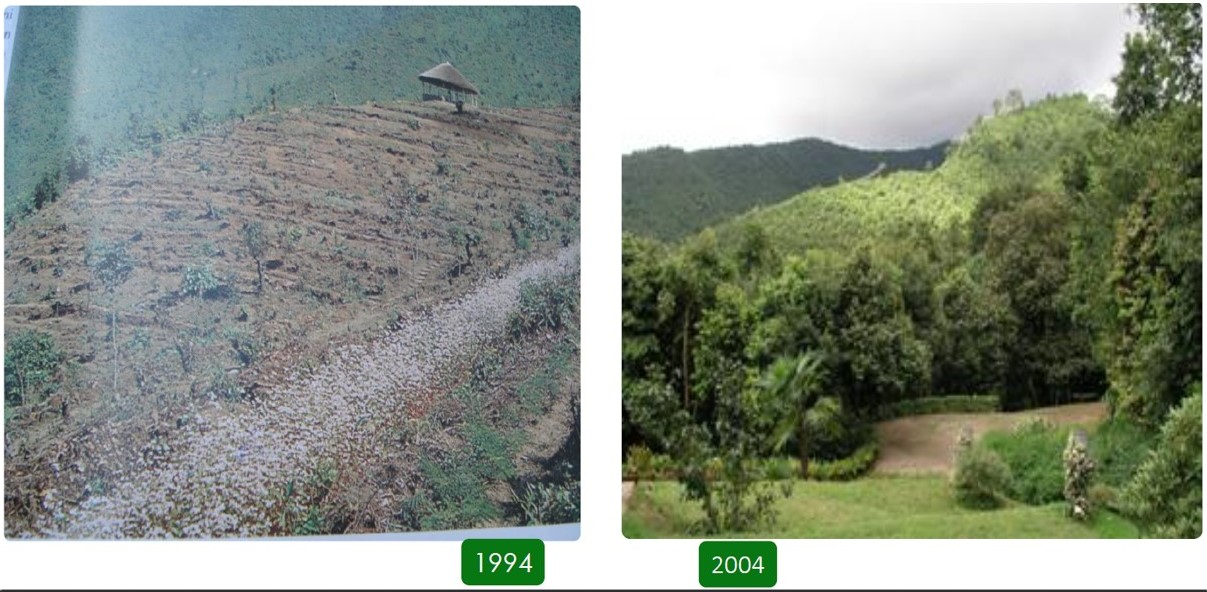
‘Seeing is believing’
Officials say the park demonstrates “the 90 tested innovative and sustainable solutions” in its “world class living lab” that the mountain communities the world over can visit and subsequently learn from it to improve their living conditions.
As Surendra Raj Joshi, the head of the knowledge park, put it: “We offer a menu of the solutions to different problems that mountain communities face. It’s more like a restaurant offering different cuisines, where the visitors can choose according to their appetite and need.”
He added: “There are common problems in mountain communities all around the world, like water availability, climate change … so we are here to offer solutions that make sense and are simple for better uptake.”
ICIMOD officials say the park caters to the needs of everyone from the mountains, including farmers, students, politicians and policymakers.
Joshi said: “A Nepali student may have a different lens to look at the park than a farmer in southern Bhutan. So visitors come here with different perspectives and look for solutions to their particular issue.”
The park has something for everyone, including sustainable technological innovations in agriculture, renewable energy, water, vegetation, soil management, livestock, aquaculture, biodiversity conservation, forestry, disaster risk reduction and spring shed management, to name a few.
NepalMinute is focusing on a few which are worth going into detail.
-
Farming techniques and crop choices
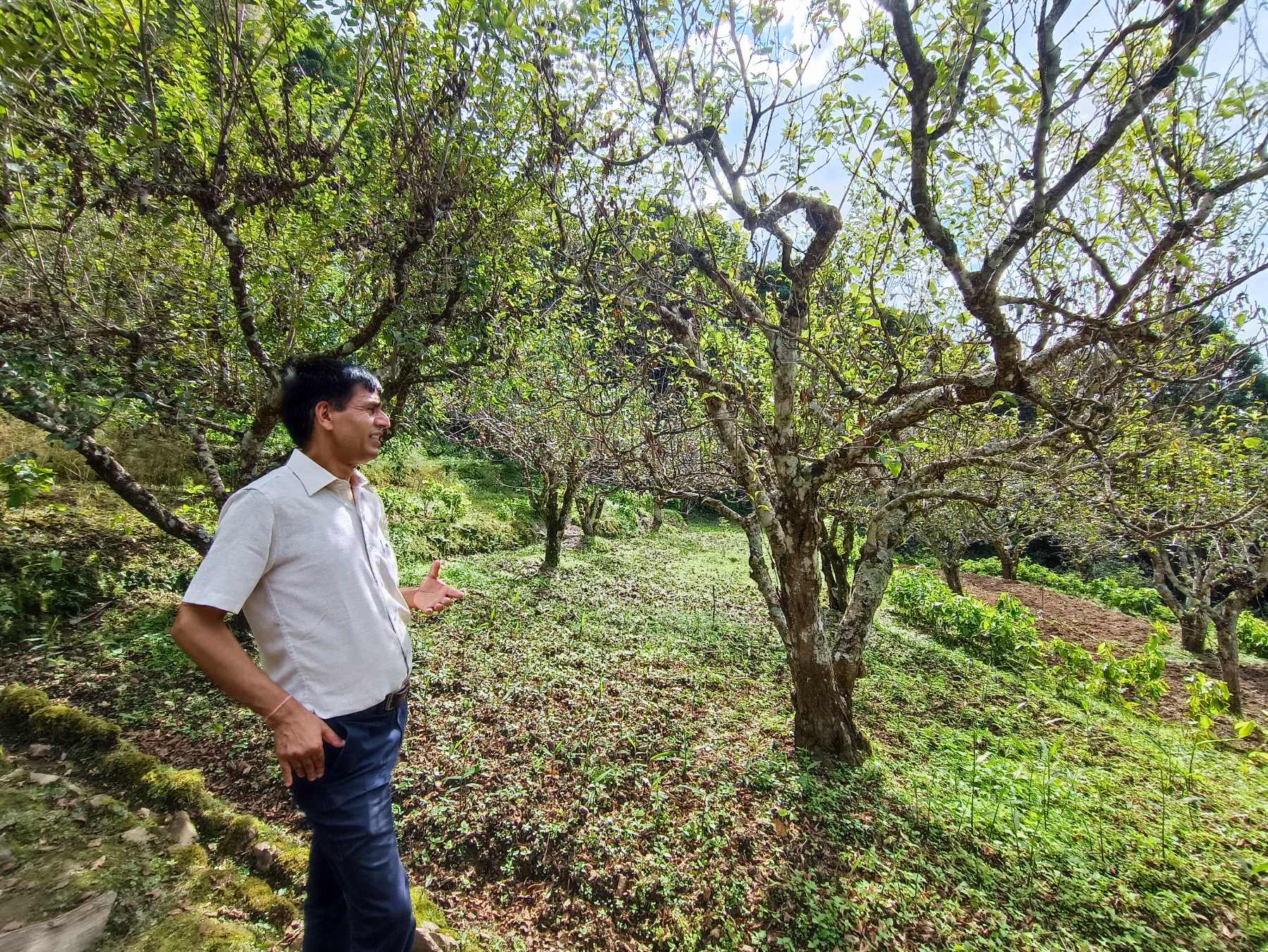
What does an intelligent farm look like? That has good productivity and minimizes the human-wildlife conflict.
Knowledge Park is a living example of it.
The farm has examples demonstrating grafting and top-work – similar to grafting but that is generally done on nearly dead plants with the top of a young plant. This drastically decreases the fruiting time of the crops.
To protect crops from wild animals, the farming technique here grows, the less favoured crops by the wild animals but valuable economically such as, ginger and turmeric instead of carrots.
Sloping agricultural land technology (SALT), also called contour hedgerow intercropping, is the other soil management technique on demonstration. The SALT method helps reduce soil erosion of nutrient-rich topsoil by intercropping with nitrogen-fixing plants (plants that enrich the soil with nitrogen necessary for plant growth), which helps increase the productivity of the field.
The park also features multi-tier farming, which utilises the same patch of land for more than one crop requiring different levels of light to increase productivity.
Using as much of naturally available resources, the water supply drains in the farm are lined with stones, which on test proved to reduce soil erosion.
-
Water Management
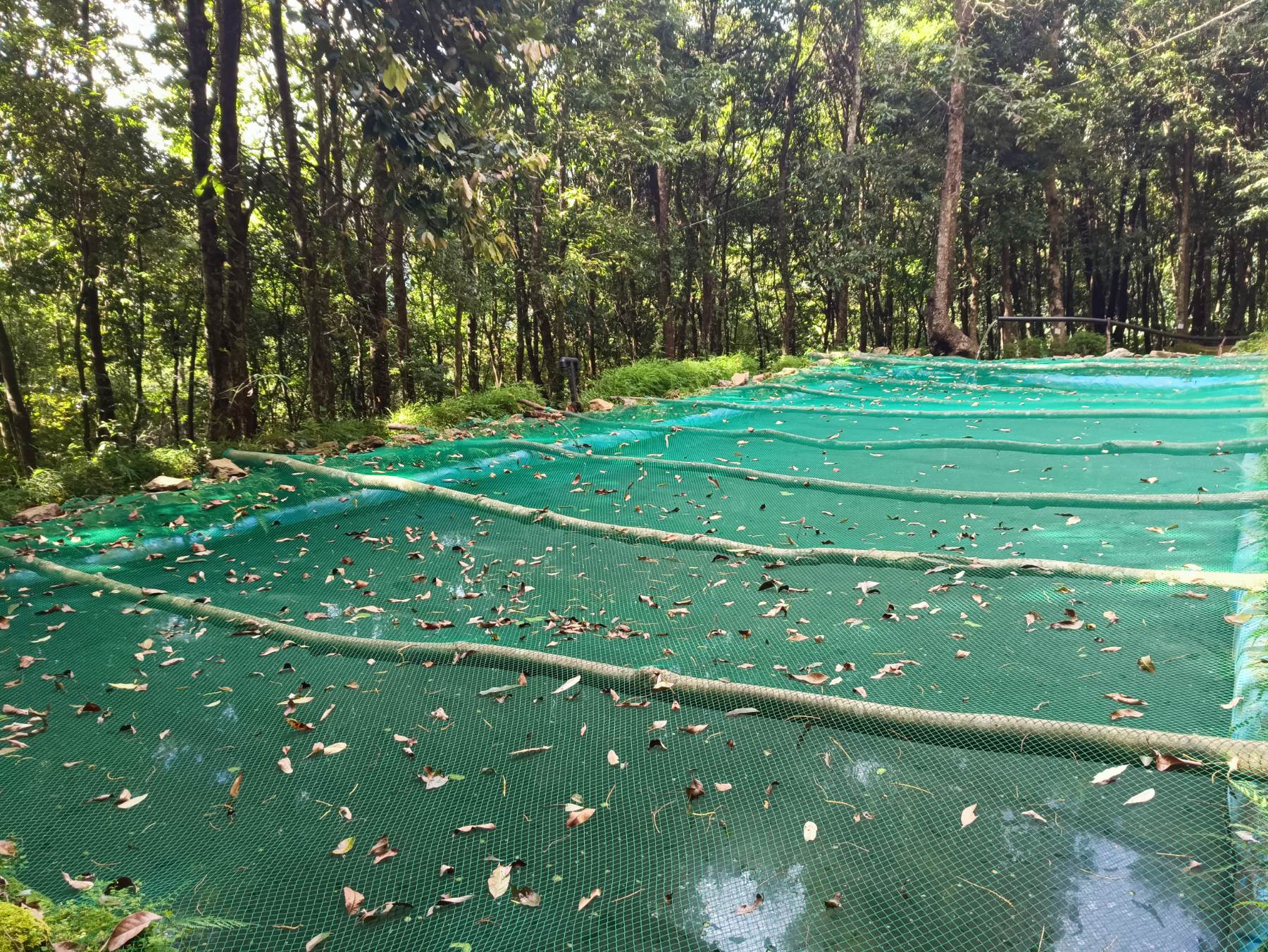
Managing the limited water resources available in its surrounding, the park showcases the art of water management.
The Godavari site demonstrates various methods of water harvesting and its sustainable use for agricultural and other purposes.
The rain/run-off water is first collected in ponds in high parts of the catchment area. Then the required amount is drained out for multiple purposes, often one drain serving multiple purposes.
In an instance, water first runs a pico-hydropower generating 200 watts of electricity before reaching a hydro-ram water pump that can pump a portion of water to a higher pond for later use without the use of electricity. The rest of the water then continues to the agricultural land downhill.
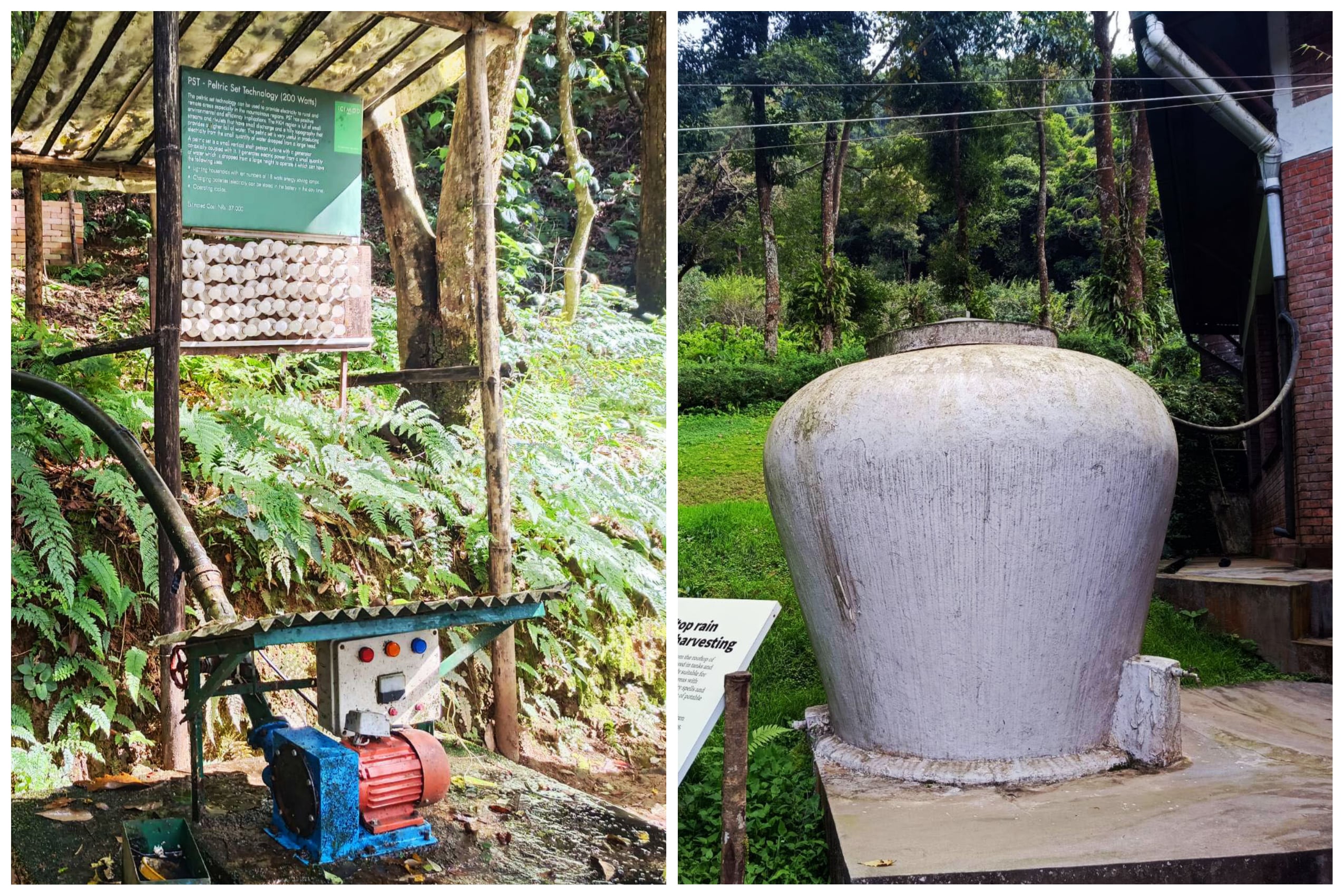
Whereas in another instant, the water from the storage pond heads to the Rainbow trout fish farm before heading down to other farms.
Rain water harvesting, and drip irrigation sites in the park, show some of the efficient ways of water management.
Further, the compound also has small ponds utilising the water used earlier to preserve the diversity of 54 species of dragonflies.
-
Renewable technologies
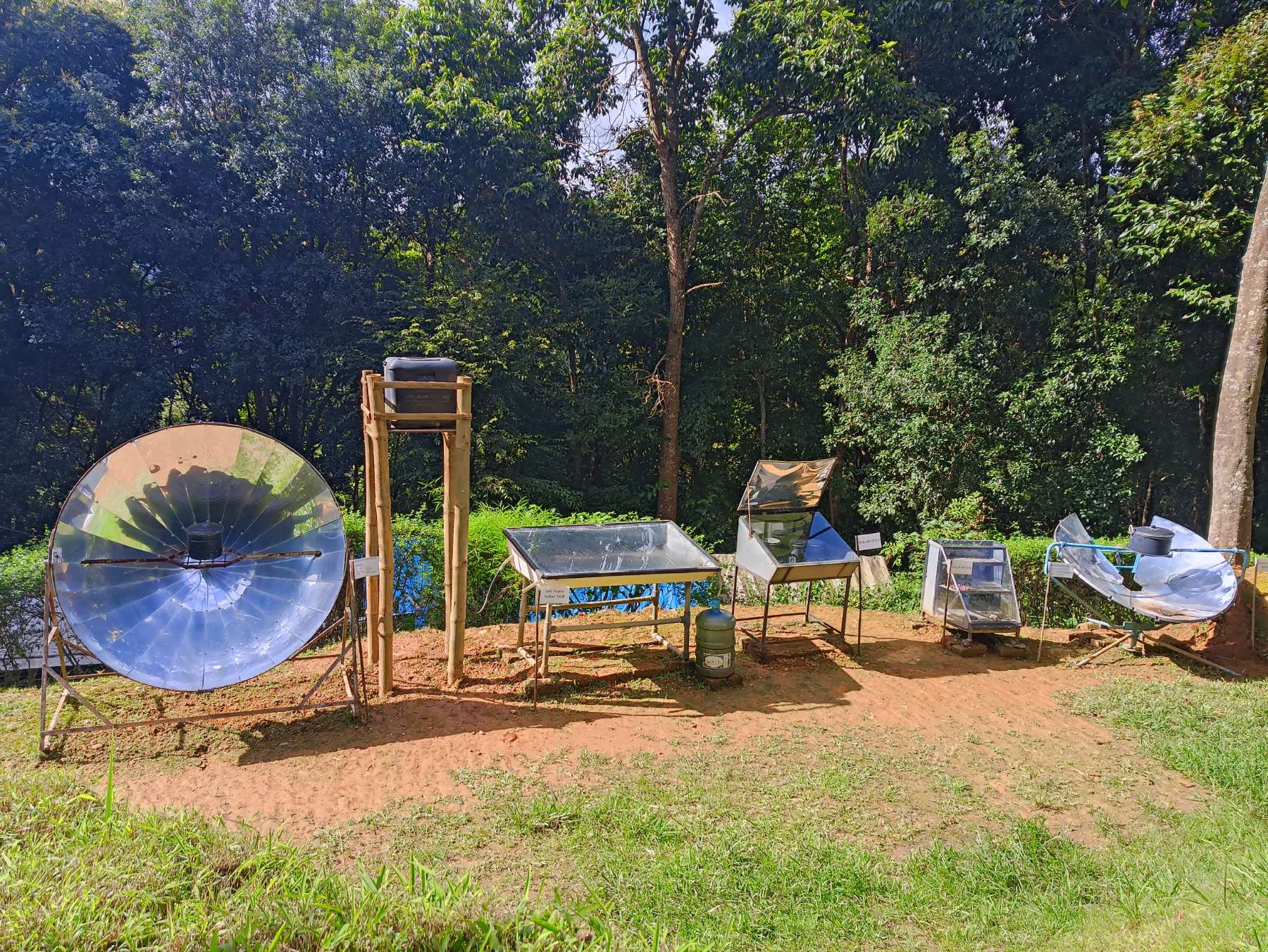
The Head at Knowledge Park, Joshi, said: “Of the common problems faced by the mountain community are two ‘E’s – emission and energy.”
He added: “Climate change has made the life of the people difficult, so finding emission-free energy is the new solution.”
With that in mind, ICIMOD has displayed different technological solutions for the problem.
One of such low-cost technologies is a parabolic solar cooker which looks like a TV dish with a cooking pot hanging in front. The dish-shaped reflector concentrates the sunlight on the pot effectively heating the pot above boiling temperature.
A scalable solution like a mobile photovoltaic groundwater pump is also on the display, which can be utilized on farms, where there is a lack of surface water resources.
The solar cookers and solar water heaters have been successful products with large uptakes, especially in Himalayan regions where firewood is scarce and power-grid is out of reach.
The campus showcases a working model of cooling chambers utilising the phenomenon of evaporation instead of electricity to keep the chamber 10-15 degrees Celsius cooler. These can be a game changer in prolonging the life of vegetables.
Among the intelligent ways of forest management, efficient use of firewood and management of invasive bushes are of prime importance. The park has models of improved cooking stoves (ICS) that use less wood than normal stoves and also produce less smoke. That can help save wood and improve the health of people.
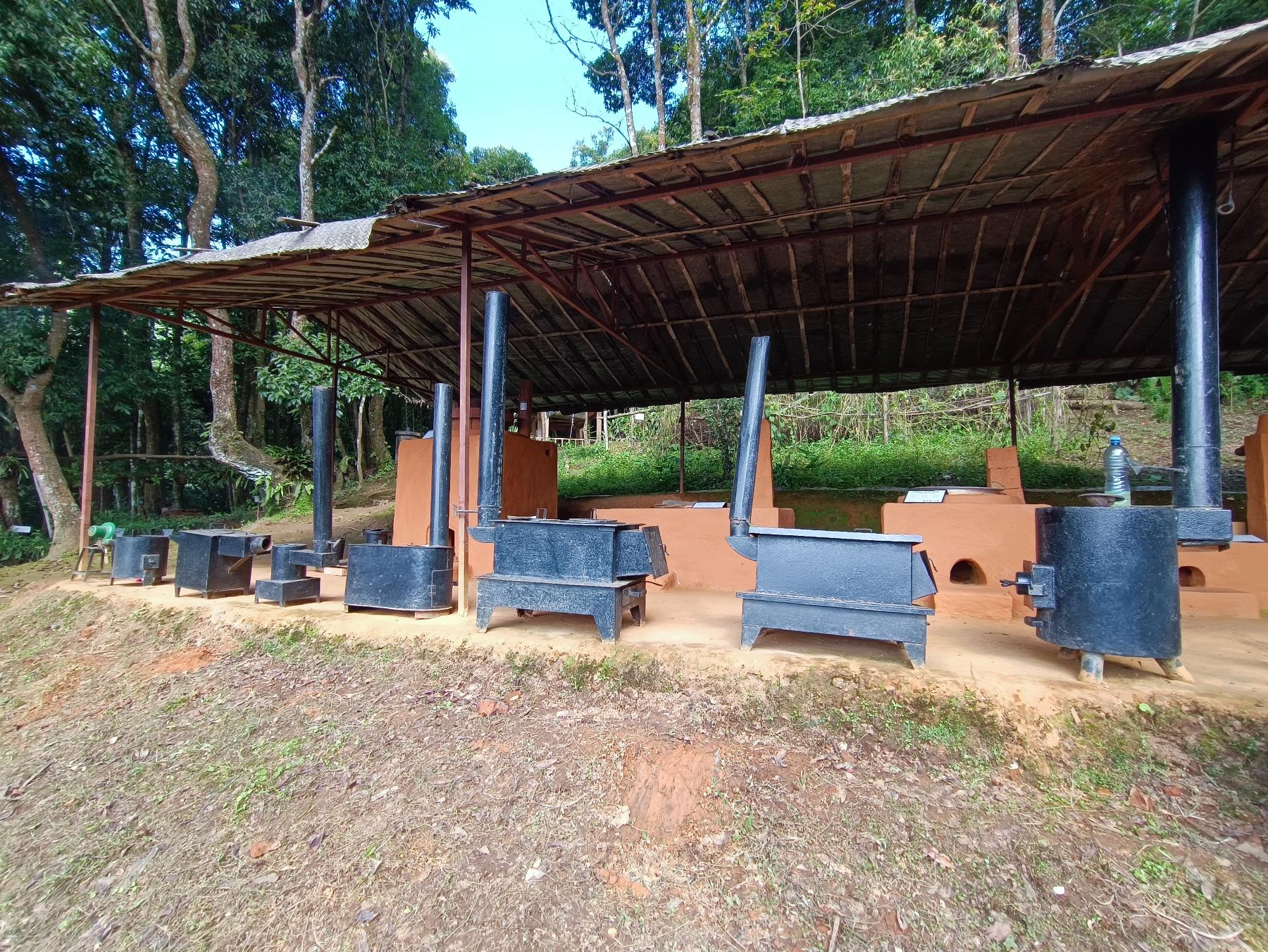
In the guided tour, you can even learn to make briquette – a compressed block of coal dust used as fuel. These briquettes are made from burning biomass like dried bushes in the forest, often of the invasive species and can be replenished in the forest. As a benefit, the practice minimizes the risk of forest fires. These are carbon-neutral products on display there.
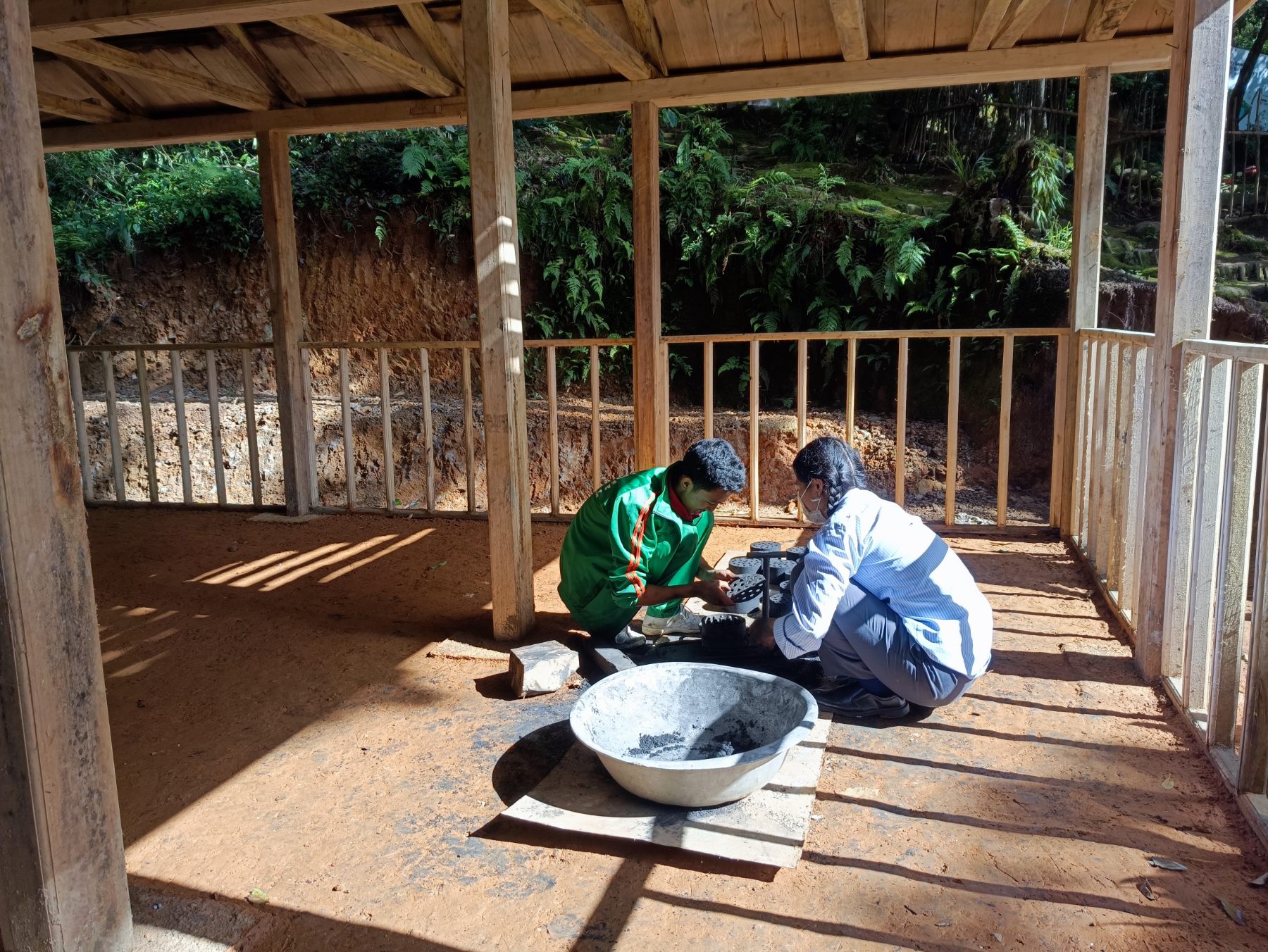
Some other technologies worth exploring in the park are bulk composting sites – for the huge amount of composting; high-value crops display like herbal plants, ‘shitake’ mushroom; floriculture; apiculture and goat farming.
Some of the other technologies on exhibit invaluable for mountain communities of the Hindu-Kush Himalayan region are earthquake resilient low-cost building and vertical farming for the urban community.
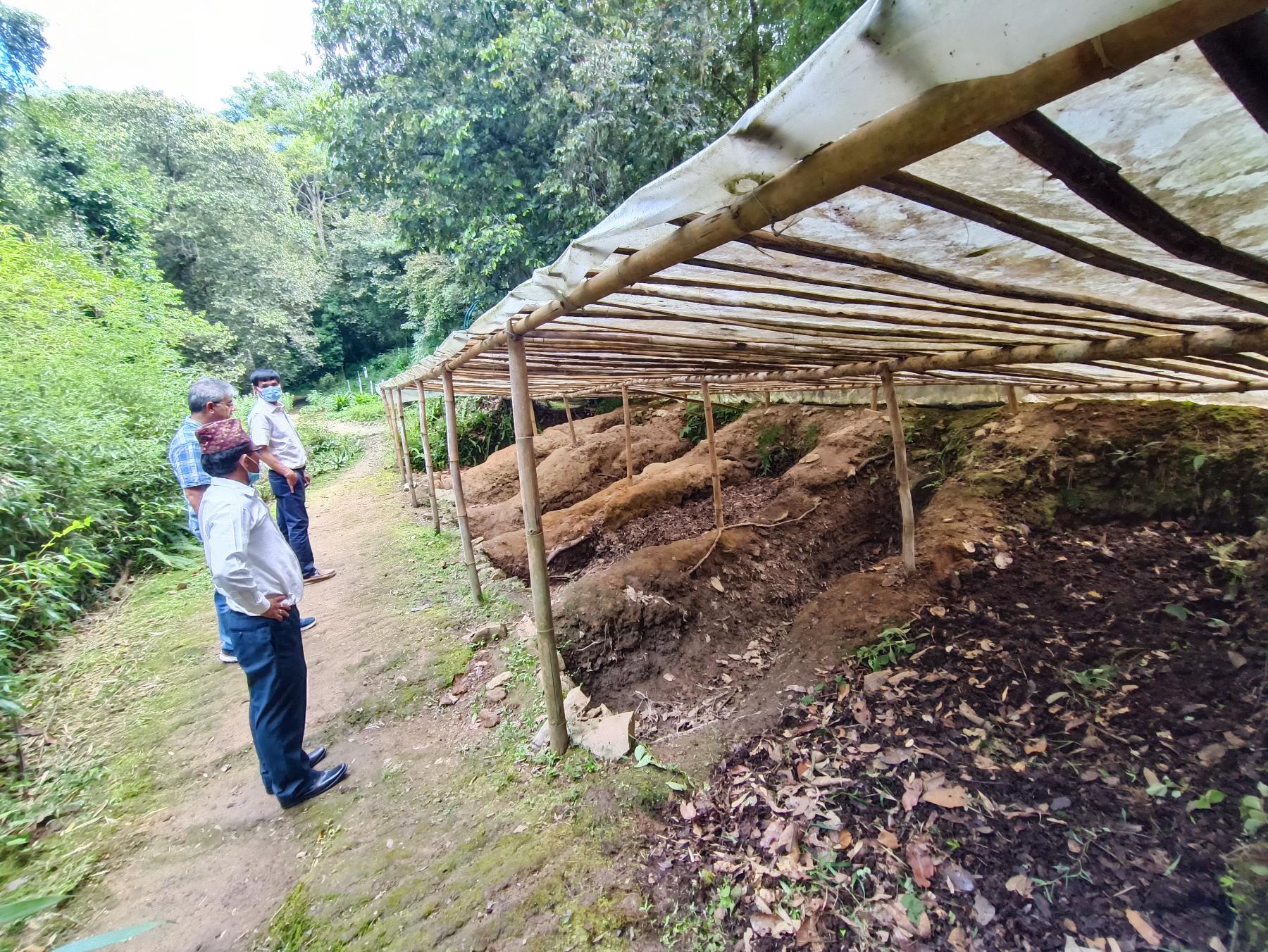
The park also tests various species of economic plants on the site, whether they are invasive or not and are climate resilient before passing knowledge to the public.
The park is constantly evolving with new additions being made as they are tested and approved. Some of the new stalls that are being built are a shed for ‘Siri’ – a cow breed – and a bio-digester for biogas generation using cow dung. A lot of experiments are going on in the 30-ha land.
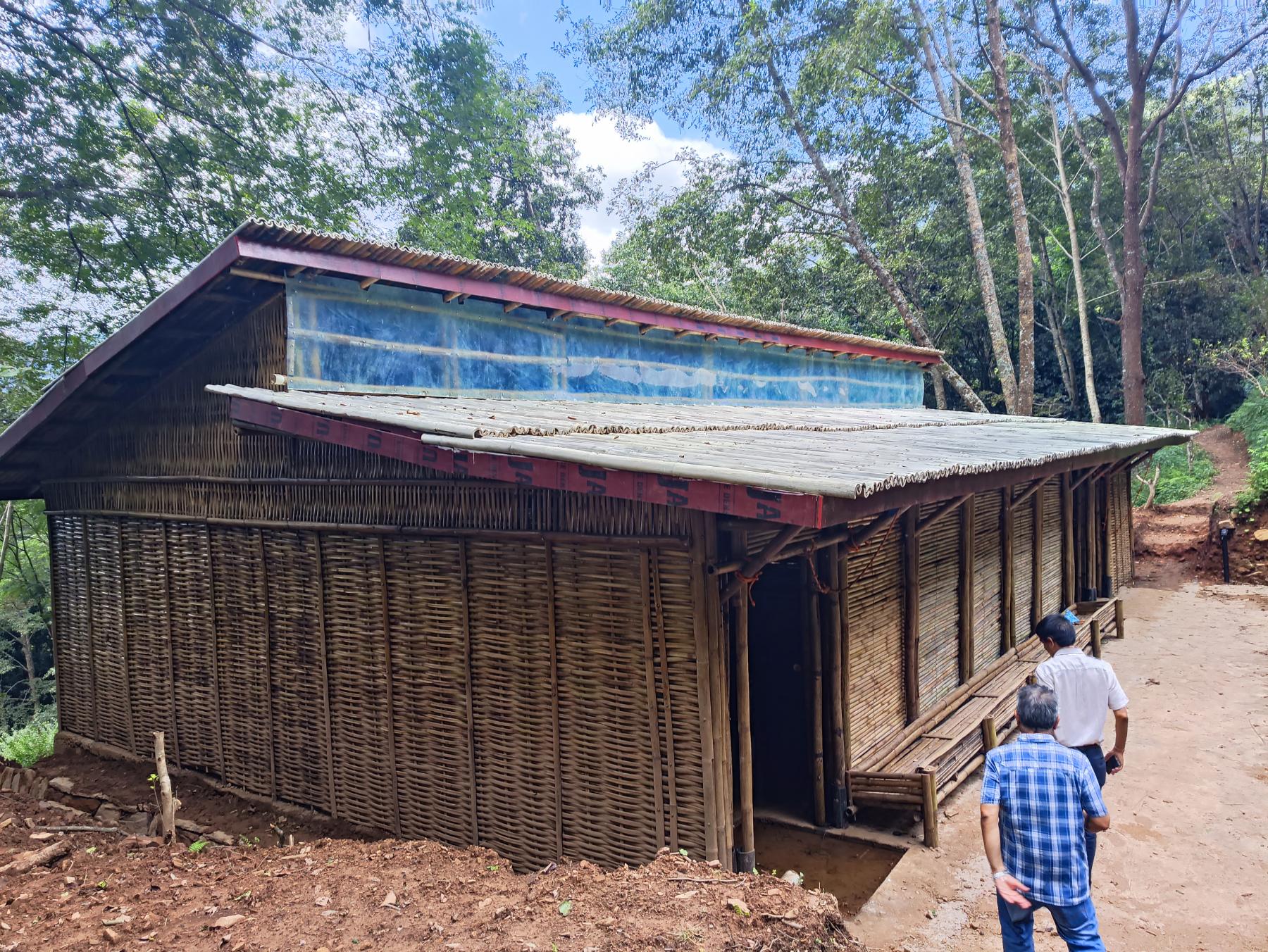
Transboundary Co-operation
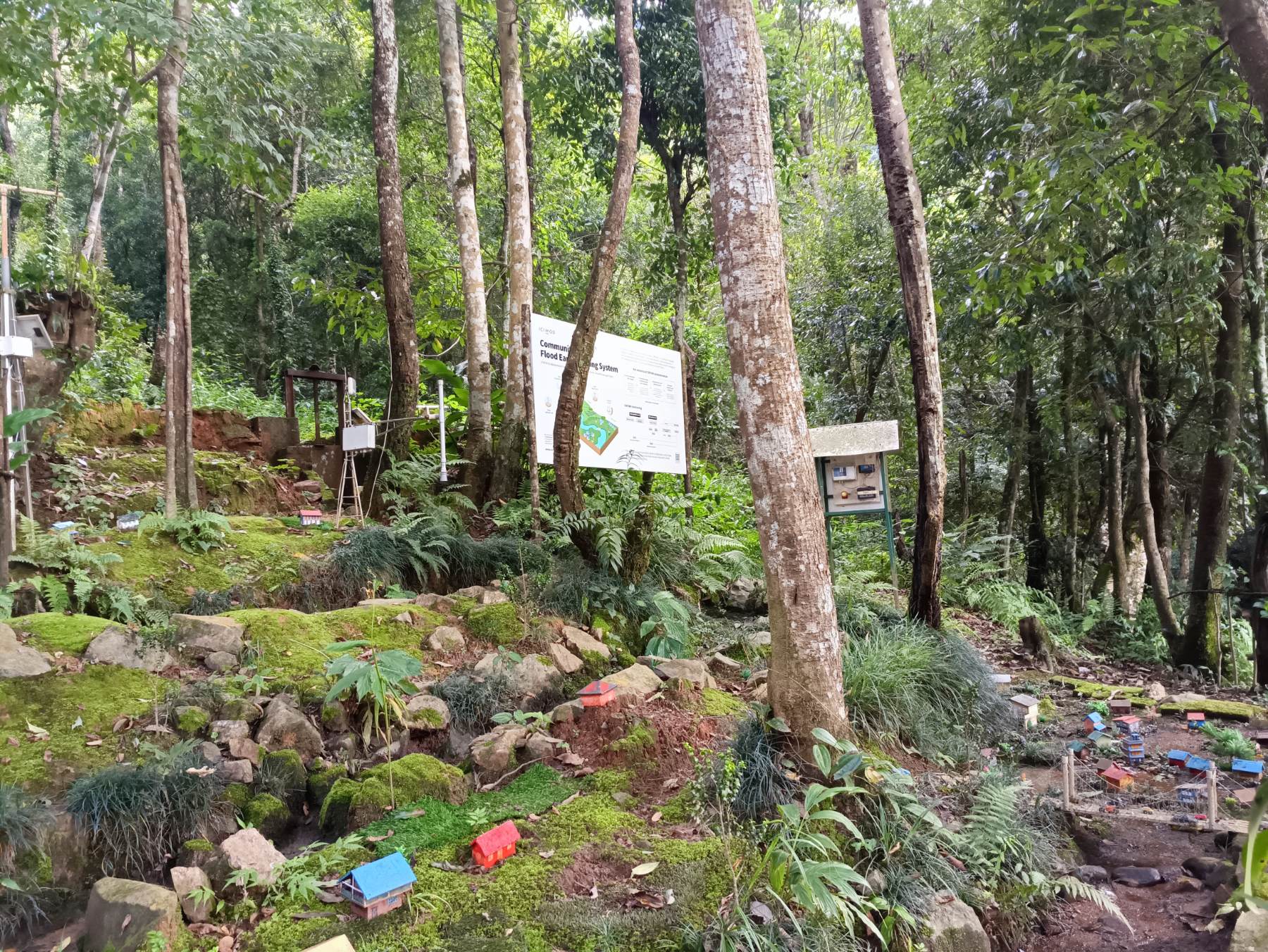
Joshi can’t quite describe in words how interconnected the mountain communities and economy are. He said: “All these works we demonstrate here will only be applicable with transboundary co-operation.”
As an example, he showed a model flood early warning system which requires the coordination of multiple communities to save the lives of people. Similarly, he restated the statement in water management.
He said: “There must be co-operation between people at the groundwater recharge site with the people at springs, similarly people living upstream should not pollute the water for people living downstream.
“Here, we show multiple uses of the same water resources without much pollution which can be possible with transboundary cooperation between communities, and even countries.”






